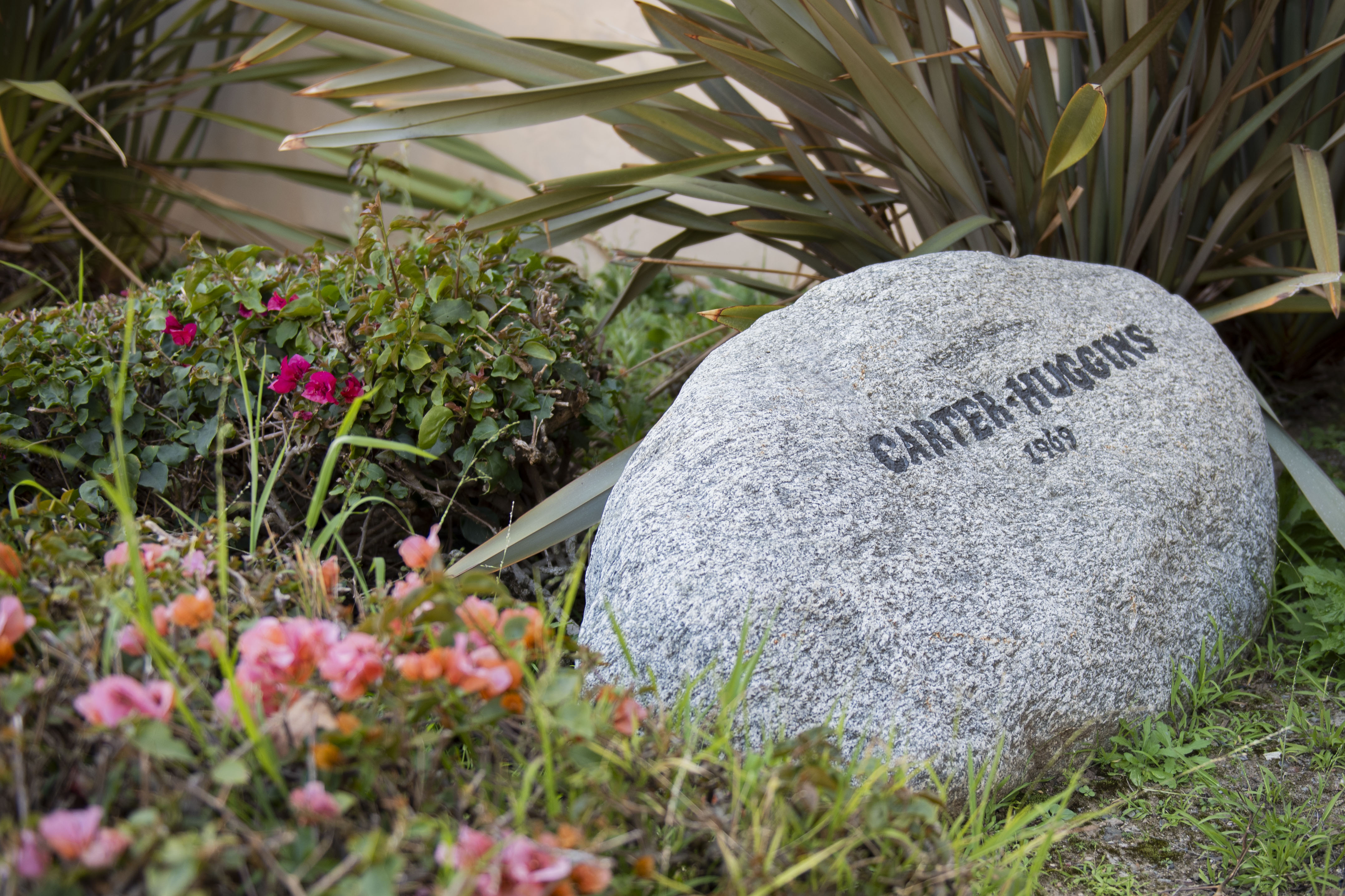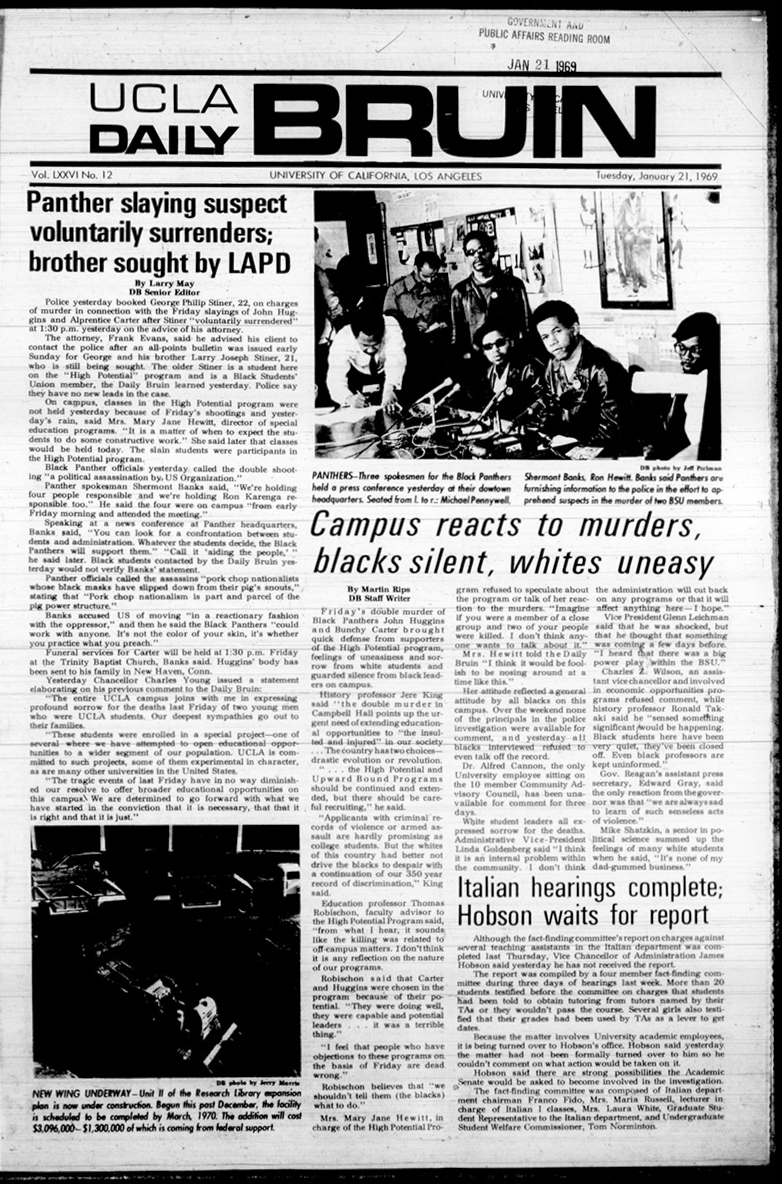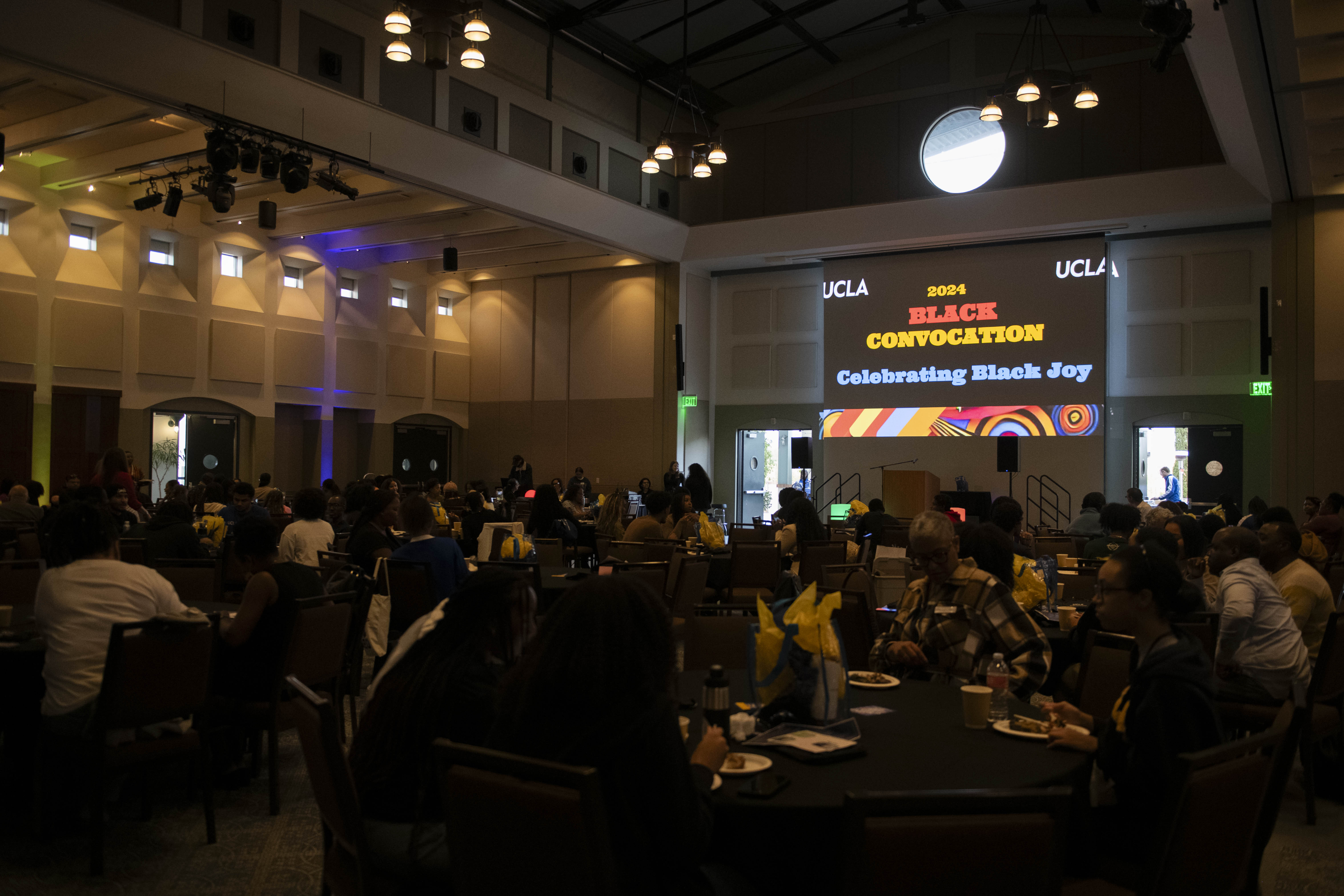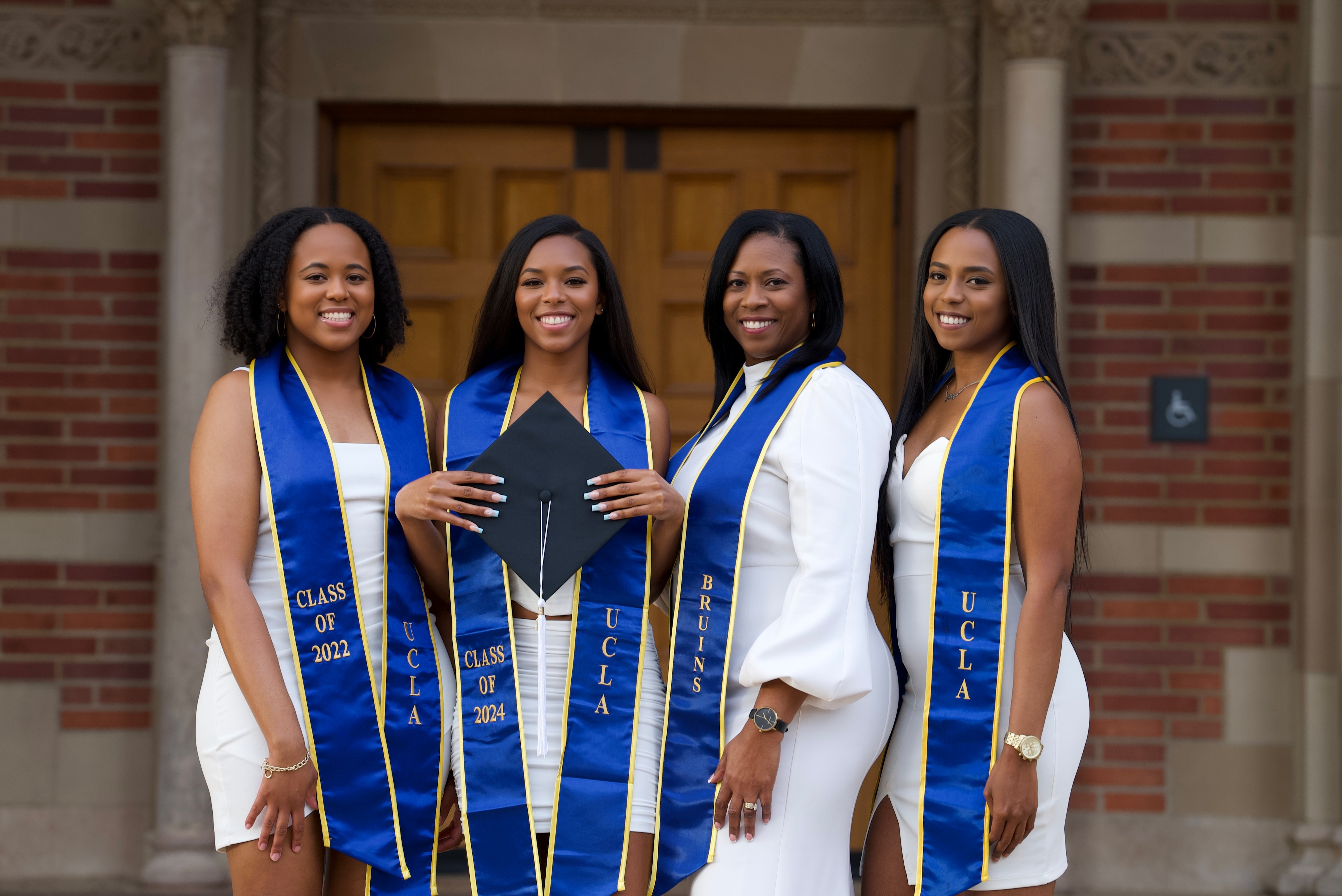UCLA community commemorates legacy of 2 students in Black Panther Party

A stone outside Campbell Hall recognizes the deaths of Alprentice “Bunchy” Carter and John Huggins Jr. – two UCLA students and members of the Black Panther Party who were shot inside Campbell Hall on Jan. 17, 1969. UCLA’s Afrikan Student Union and Academic Advancement Program co-hosted an annual memorial Thursday for the two students. (Andrew Diaz/Daily Bruin)

By Victoria Munck
Feb. 26, 2025 1:30 a.m.
Editor’s note: This article includes mentions of gun violence that may be disturbing to some readers.
UCLA’s Afrikan Student Union and Academic Advancement Program co-hosted a memorial Thursday for two students and Black Panthers killed in Campbell Hall.
The campus organizations partner annually to celebrate the legacies of Alprentice “Bunchy” Carter and John Huggins Jr., whom Claude “Chuchessa” Hubert – a member of Black nationalist group US organization – shot Jan. 17, 1969. The killings happened while the FBI conducted its COINTELPRO project. The project intended to neutralize organizations, including the Black Panther Party, considered dissident to United States politics.
Carter and Huggins were members of UCLA’s High Potential Program – now the AAP – while participating in the Black Panthers’ Los Angeles chapter.

The Black Panther Party was a political organization that advocated for the defense of African Americans against police brutality, according to the Associated Press. The group – which originated in Oakland during the latter half of the 1960s – launched free breakfast programs and health clinics while also advocating for revolution, socialism and armed self-defense. Carter headed the Southern California chapter, which experienced heavy police activity, including a raid of the Panther headquarters, according to the Los Angeles Times.
[Related: Throwback Thursday: Fifty-year anniversary of ‘Bunchy’ Carter, John Huggins shooting]
ASU Chairperson Kahlila Williams opened the memorial with a speech, acknowledging that much of the UCLA community is unaware of Carter and Huggins’ history.
“We have to recognize that there is a lot of radical activism that happened to make this space welcoming for the students, for Black students,” said Williams, a fourth-year African American studies and sociology student.
While the commemoration traditionally takes place on the anniversary of Carter and Huggins’ deaths, the LA County wildfires prompted a postponement to Black History Month, Williams said.
After attendees were offered food such as tostadas and jambalaya, former AAP associate director Masai Minters screened three videos detailing the Black Panthers’ historical presence on campus and in the greater LA area.
[Related: Black History at UCLA: ‘Bunchy’ Carter and the Black Panthers]
One video referenced the gray stone that rests outside of Campbell Hall’s east entrance, reading “Carter-Huggins 1969.” Williams said the stone was placed there against the university’s wishes in 2010 by students who noticed a lack of commemoration for Carter and Huggins.
“When you see that stone out there … that there is the legacy of the Panthers,” Minters said. “The legacy of self-determination, the legacy of students saying, ‘We can say what we need. We know what we need.’”
During this year’s memorial, the ASU and AAP placed greater emphasis on the role students have played in preserving Carter and Huggins’ legacies over the past few decades, Williams said. Bruins have taken it upon themselves to head their memorial celebrations, she added, and continue to advocate for acknowledgement by the university.
[Related: Petition to rename Campbell Hall for Black Panthers killed in 1960s gains support]
Students have also advocated since Carter and Huggins’ deaths to rename Campbell Hall in recognition of them. Khale’ Jackson, a fourth-year political science student and ASU vice chairperson, said he believes the renaming would speak to the values of UCLA’s Afrikan diaspora and acknowledge the broader impact of people of color on campus.
Vickie Mays, a special advisor to the chancellor on Black life, encouraged attendees to advocate for the building’s renaming with newly appointed Chancellor Julio Frenk, who is currently developing a strategic plan ahead of his June inauguration.
“Ask for some accountability, and then if the man don’t act right, show up and show out,” said Mays, a professor of health services and psychology, in a speech at the event. “I think that the rock out there is great, but I’m aiming for some buildings.”
Leslie Juarez, a third-year English student and AAP member who attended the event, said she also believes the university could do more to make Carter and Huggins’ history more widely known. She added that she hopes their legacy can inspire students to advocate for their social rights.
To conclude the ceremony, ASU members distributed tealights and led guests outside for a vigil at the Carter-Huggins memorial stone. Williams spoke on the meaning of the rock before attendees placed their lights on it, one at a time.
Students continuously tend to the grass and weeds surrounding the stone to ensure the individuals’ legacy is not covered up, she said. Their annual memorial event is an act of resistance, she added, and the stone symbolizes the key role activism has played in the university’s history.
“What UCLA wants to do, especially as we had our encampments last quarter and everything, they want to act like the things that we have on this campus didn’t come out of radical activism,” Williams said. “Just like this rock, we’re going to continue to stand here, whether we’re told we can’t do something or whether we can.”




